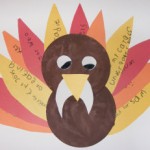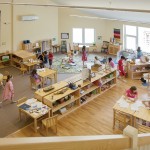It’s that time of year again: New Year Resolutions. Does that make you feel excited (like myself) or make you roll your eyes (like my husband)? People across the globe are reflecting on the past year and thinking about what they would like to change about themselves, with resolutions ranging from weight loss, healthy eating, giving up bad habits, or staying on top of those seasonal bulletin boards you swore you would do back in August.
I usually do not make resolutions, or if I do I try to stick with a one-word theme for the year. This year I am making a one-word resolution inspired by Think Again by Adam Grant: Rethink.
I do not want to become stagnant or so set in my ways that I, and therefore my students, do not bloom into the beautiful flowers we were meant to become. While sometimes the growing season might experience a drought or less than ideal growing conditions, some growth can take place. One will never know if this is the year that the flower will blossom and bloom, or if it is the year it finally puts down roots, and both parts of growth are important. I want to rethink my professional and personal beliefs and remain open to different perspectives and new ideas to continue to grow.
I am already good at overthinking, so I am going to shift the focus to rethinking this year. In his book, Grant discusses “thinking like a scientist” and testing your views as if they are a “hypothesis” to see if the data confirms your thinking. I have experienced “rethinking” several times over the past several years since I have moved schools and districts, changed grade levels multiple times, and took on a new role outside the classroom.
I had to rethink the structure of my classroom instruction when I moved up to teaching third grade after many years of teaching second grade. At first, I was hesitant to release the students to more cooperative work and thought that direct instruction would be beneficial, but after observing my students interact with each other in class I realized they could achieve so much more if I adjusted my instructional strategies. This rethinking was uncomfortable and challenged much of what I was confident implementing and knew would work with students, but the data confirmed that this type of instruction produced a better result so it was worth the “pain”.
I had to rethink the structure of my classroom management when I moved down to teaching first grade, after returning to third grade. I always knew students needed structure, but I did not have enough structure in place at first. This rethinking did not challenge my beliefs, but rather prompted reflection on how to best adapt my current teaching style to the needs of the students I had, so I did not have any “growing pains” while working through this thinking. This data was easy to track and confirm: At the beginning, I wanted to pull my hair out 8 times an hour, and after adjusting my classroom structure I only wanted to pull my hair out once an hour.
I had to rethink what I knew about teaching struggling readers earlier this school year when my beliefs were challenged by what I noticed from across my horseshoe table working with students, and I had to make adjustments to my beliefs and actions to effectively teach these students. I am still testing this hypothesis, and every time I receive new data on my students I make changes as needed.
Oh, and every year I rethink my classroom bulletin boards. Although that rethinking is mostly “What was I thinking at the beginning of the year? Why did I think changing this thing out each season was reasonable?”
I cannot be the only one who has experienced this before. I would like to invite you to rethink with me this year. What might be some things in your professional life that could use some rethinking? How might you think like a scientist and use the data to prove your hypothesis true?










Comments 1
It’s funny how I still rethink nearly everything every year – even after so many years. This year – teaching new content to a new grade level at a new school led to a lot of rethinking starting around November and continuing to this morning.
The book is a super recommendation, by the way.